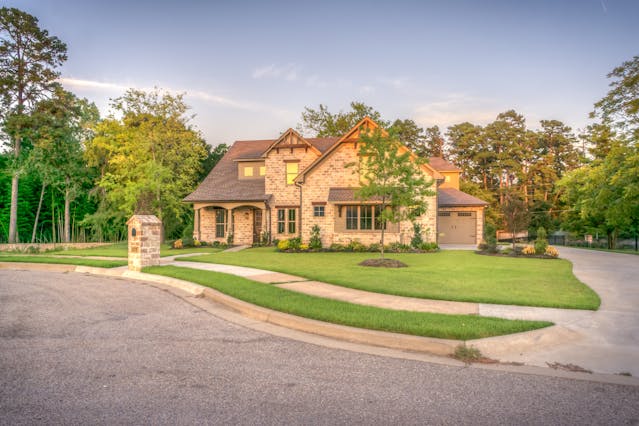Ever found yourself staring at a stunning sunset or getting lost in the peaceful charm of a misty morning? If you’ve ever felt that urge to pick up a brush and capture the beauty around you, you might consider diving into landscape painting. But where do you even start, right? Don’t sweat it, fellow art lover! We’ll spill the beans on becoming the absolute boss of landscape painting. We’ll talk about nailing those tricky light and shadow tricks and how to make those wide-open spaces pop on canvas. It will be a journey packed with creativity and a lot of fun. So, grab your paintbrush, set up shop, and let’s paint this world together, one stroke at a time!
Find a Good School
Are you itching to kickstart your landscape painting journey? Well, finding a solid school to hone your skills is step one. You might think, ‘Why bother with school when I can wing it?’ Sure, you can go that route, but trust us, having some guidance can seriously level up your game. Look around your area first – there might be a local school with killer art classes that won’t break the bank. But if you’re craving top-notch training and rubbing elbows with other budding Picassos, consider checking out the best day schools in your area. They usually offer traditional techniques and out-of-the-box creativity that can push your landscape game to the next level.
Now, let’s talk priorities. When scoping out schools, focus on something other than the fancy facilities or the prestige factor. Those things are cool, but finding a place that vibes with your style is what matters. Check out their curriculum. Do they offer classes that cover the nitty-gritty of landscape painting? And don’t forget about the teachers. Are they passionate about what they do? Do they seem like the kind of folks who’ll inspire you to unleash your inner artistic beast? Having mentors who get your creative juices flowing is worth its weight in gold.
Lastly, let’s talk money. Nobody likes talking about cash, but it’s gotta be done. Before you commit to any school, take a good hard look at your budget. Can you swing the tuition without living off instant ramen for the next decade? If not, no sweat – you can find plenty of scholarships and financial aid options if you know where to look. So, don’t let money stand in the way of your dreams. With a bit of hustle and creativity, you’ll find a perfect school for you – and your wallet.
Find Your Technique

Once you’ve sorted your school, it’s time to dial in on your technique. Painting landscapes isn’t just about slapping colors on a canvas – it’s about finding your groove, your signature style. And there are more techniques than flavors at an ice cream shop. So, how do you find the one that clicks for you? Easy peasy. Start by experimenting. Try different styles, from impressionism to realism and everything in between. Don’t be afraid to get messy and make mistakes. That’s how you learn, right?
Next up, let’s talk formation. No, not the kind you’d see on a football field – we’re talking about your setup. Find a comfy spot with good lighting to spread out your gear and get to work. Some folks prefer the great outdoors for inspiration, while others thrive in the cozy confines of their studio. Figure out what works best for you and roll with it. And speaking of gear, don’t feel like you must drop a fortune on fancy paints and brushes. Quality tools can make a difference, but your creativity will make your paintings pop.
We can’t avoid the discussion about technique. Pay close attention to the masters – study their strokes, their use of color, and their composition. But don’t get too caught up in trying to replicate their work. Remember, creativity thrives when you put your own spin on things. So, take what you learn and make it your own. Mix and match techniques, play with different mediums, and don’t be afraid to push the boundaries. That’s how masterpieces are born.
Discover Your Style
Buckle up because we’re now diving into the fun discovery of your unique style. Think of it like finding your fashion sense but for painting. First, you should take a good, hard look at what gets your creative juices flowing. Do you lean towards bold, vibrant colors, or are you more about that subtle, understated vibe? Maybe you’re all about capturing nature’s raw energy or adding surrealism to your landscapes. Whatever floats your boat, embrace it. Your style is like your artistic fingerprint – one-of-a-kind.
Playing with colors is where you make your mark. You could stick to the standard greens and blues for your landscapes, but where’s the fun in that? Mix things up and get wild with your palette. Throw in unexpected pops of color and experiment with a custom shade that reflects your mood and personality. For example, replace blues with red and greens with violets. Remember, there are no rules here – it’s all about what feels right. So, don’t be afraid to think outside the box and let your creativity run wild.
Figure Out How to Capture The Finer Details

While painting, zoom in on the nitty-gritty and try to capture the finer details that make your landscapes pop. For example, trees. Anyone can slap a green blob on a canvas and call it a tree, but you must make yours unique. Pay attention to the little things – the way the branches twist and turn, the texture of the bark, the subtle play of light and shadow dancing across the leaves. Take a leaf from Mother Nature’s book and study how trees move and grow. And hey, if you’re feeling extra adventurous, why not throw in a bird’s nest or a squirrel chilling in the branches? It’s all about those little touches that bring your painting to life – like tree care but for 2D trees. You can even visit a flower shop to explore the colors of dozens or hundreds of different flowers.
Some people love to paint buildings. Whether painting a quaint little cottage or a towering skyscraper, getting those architectural details right can take your painting to the next level. Pay attention to things like perspective and proportion – even that wonky-looking shed that adds realism to your work. And don’t forget about the little extras – the flower boxes in the windows, the chimney smoke curling up into the sky. It’s all those little details that give your painting that extra oomph.
Lastly, nothing is as elusive a beast as the painting’s atmosphere, which captures the mood and feeling of a scene. From painting a foggy morning to a sun-drenched afternoon, it’s all about setting the mood. Pay attention to things like color temperature and value – warm colors for a cozy sunset and cool colors for a misty morning. And don’t be afraid to get experimental with your brushstrokes – a few wispy clouds here, a hint of morning mist there. It’s all about creating an atmosphere that draws your viewers into your painting and leaves them wanting more.
Explore The Old Masters
Take a trip down memory lane and dive into the world of the old masters. These folks knew a thing or two about painting landscapes. So, grab your art history book, and let’s get acquainted with the OGs of landscape painting. From the serene landscapes of Claude Monet to the dramatic vistas of J.M.W. Turner, there’s a whole treasure trove of inspiration waiting for you. Pay attention to how they played with landscape lighting – how they captured a sunset’s soft glow or the midday sun’s harsh glare. Don’t be afraid to steal a few tricks from their playbook. After all, imitation is the sincerest form of flattery.
Of course, try to put your own spin on things. The old masters were great, but that doesn’t mean you must stick to their script. Use their work as a jumping-off point for your own creativity. Maybe you apply Monet’s love of color to a scene from your backyard, or perhaps you borrow Turner’s knack for drama and inject it into a cityscape painting. The sky’s the limit; get a little wild and experiment with different styles and techniques. You might just stumble upon your masterpiece in the process.
Another essential point to discuss is staying inspired. Painting landscapes is all about tapping into that sense of wonder and awe you feel when you’re out in nature. The masters also probably felt the dreaded artist’s block at some point. So, get out there and explore! Take a hike through the woods, stroll along the beach, or sit in your backyard and soak up the scenery. Notice how the light filters through the trees, and clouds dance across the sky. It’s these little moments of beauty that’ll fuel your creativity and keep you coming back to the canvas time and time again.
Learn From Others
Soaking up wisdom from your fellow artists is also helpful. You don’t have to go it alone; reach out to other painters – whether they’re beginners like you or seasoned pros. Join a local art group, enroll in some workshops, or just slide into those DMs and ask for advice. You’d be surprised how willing people are to share their knowledge and lend a helping hand. Always try to think outside the box – you never know when a landscape designer or photographer might drop some wisdom that blows your mind. Keep your ears open and be ready to learn from anyone and everyone.
If you get the chance, consider giving back. Share your own experiences and insights with your fellow artists. Offer up tips and tricks that have helped you along your journey, or maybe even collaborate on a project together. Creativity thrives in a community, so don’t hesitate to reach out and lend a hand whenever you can. You’ll be forging some lifelong friendships along the way.
When learning from others, you must keep an open heart and mind. You might think you’ve figured out this whole landscape painting thing, but there’s always more to learn. Always be humble, curious, and willing to admit when you don’t have all the answers. Those moments of vulnerability will push your art to new heights and help you become the best painter you can be.
Select Your Tools
Let’s face it: you can’t paint without the right tools. But don’t worry; you don’t need to break the bank to get started. You can make magic happen with just the basics. Grab yourself some decent-quality paints in various colors. And don’t forget about brushes – a few different sizes should do the trick in this fabrication of painted landscapes. Oh, and speaking of brushes, don’t be afraid to get creative with your tools. You can stick to the traditional stuff, but why not try dabbling in palette knife painting or even creating custom brushes? The world is your canvas, so don’t be afraid to get a little wild with your tools.
Your painting surface also matters. Canvas is the classic choice, but don’t feel like you have to stick to it. Experiment with different textures and materials – maybe try painting on wood or a wall. You could even whip up custom canvases if you’re feeling crafty. And don’t forget about size – bigger isn’t always better, especially when working in a small space. Find a size that works for you and roll with it.
Always Try Something New

The key to keeping your creativity flowing is never to stop experimenting. Don’t get stuck in a rut, repeatedly painting the same old scenes. Instead, push yourself to try new things – experimenting with different techniques, tackling unfamiliar subjects, or even dabbling in other art forms like photography or home designs. The world is full of inspiration just waiting to be discovered. You never know when that next big breakthrough might happen.
Embarking on the landscape painting journey involves a multifaceted approach, blending technical skill with creativity and a thirst for exploration. Each step contributes to your growth as an artist, from finding the right school and honing technique to discovering a unique style and capturing intricate details. Ultimately, the passion, dedication, and willingness to push boundaries will propel your landscape painting to new heights. So, embrace the journey, trust in your vision, and let your creativity flourish on the canvas.




